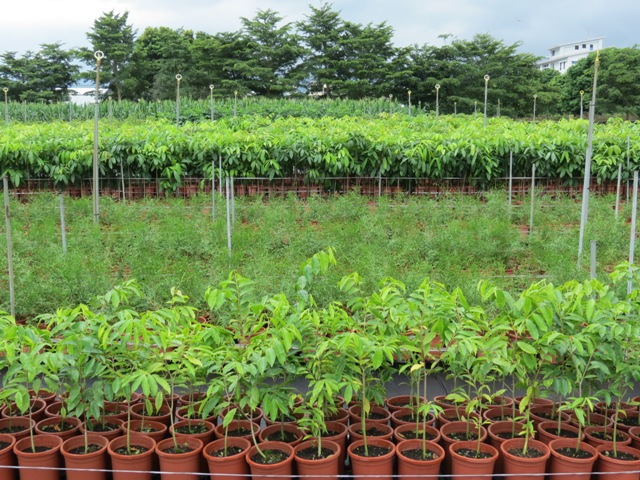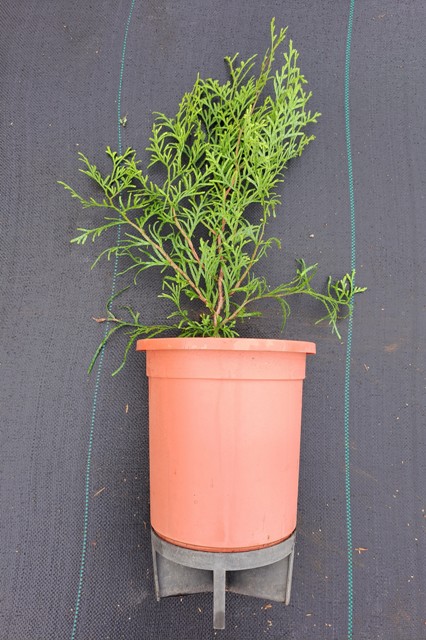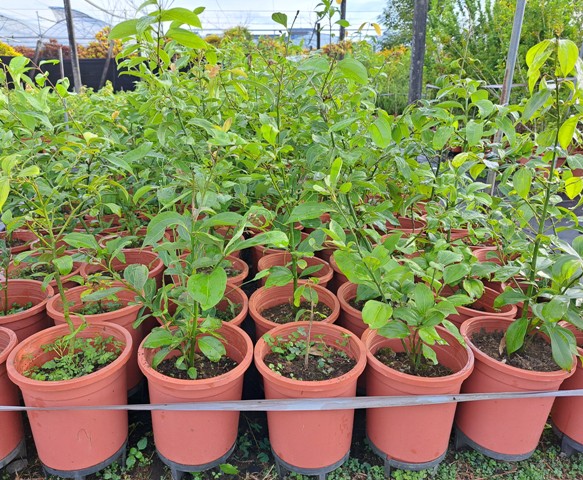 Home > News > The Air-Pruning root pot seedlings with First Class Qualities for Net Zero Emission and Greening Home > News > The Air-Pruning root pot seedlings with First Class Qualities for Net Zero Emission and Greening |
The Air-Pruning root pot seedlings with First Class Qualities for Net Zero Emission and Greening
In order to mitigate the impact of climate change, the Council of Agriculture (COA) actively promotes the net-zero carbon emission plan, one of important path is increasing forest area to improve carbon sinks. Taiwan Seed Improvement and Propagation Station (TSIPS) adopt the air-pruning pot seedling technology to nursery seedlings with complete root system, beautiful tree shape, and high transplant survival rate, thousands of green and beautiful container tree seedlings were supplied every year (Fig. 1).
TSIPS pointed out that most of the private seedling farms use small plastic bags to nursery tree seedlings to save the cost and root system would easily penetrate the bags. Hence, the transplant survival rate would be low due to root damage during transplanting process. Nowadays, the production of seedlings in advanced countries has been adopted as container seedlings. The size of containers and nursery management has been standardized. Therefore, container seedlings will fit the trend of Taiwan's future landscape tree seedling nursery applications.
The process of propagation, cultivation to finished product or application of container seedlings in air-pruning pots was adopted in TSIPS. Because the base of the pot is separated from the soil, which can prevent the root system digging into the soil and successfully transplant without damage the roots. After taking off the pot and planting with high survival rate, the trees grow fast and no need to trim the tree shape (Fig. 2)
There are about 10,000 afforestation trees annually nursery by the TSIPS, including thirty kinds of species, such as formosan ash (Fraxinus formosana), comphor tree (Cinnamomum camphora), mori cleyera (Cleyera japonica), golden trumpet-tree (Tabebuia chrysantha), formosan michelia (Michelia compressa), odourbark cinnamomum (Cinnamomoum osmophloeum), etc.(Fig. 3) Their air purification capacities are different among each other. The afforestation trees raised by TSIPS, can be offered free through official applications for all the air quality purification zones designated by the Environment Protection Administration (EPA) or the local governments and organizations in Taiwan. In addition, there are also other kinds of afforestation trees sold for public. If you have any questions, please feel free to contact Mr. Huang. (04-25825463)
 Fig. 1.The afforestation seedlings (Agarwood - Aquilaria agallocha, Taiwan Incense Cedar - Calocedrus macrolepis, Mahogany - Swietenia mahogoni) raised in 6 inches air- pruning pot |
 Fig. 2. Air- pruning pot seedling |
 Fig. 3. Odourbark cinnamon (Cinnamomum osmophloeum) is the native species of the family Lauraceae becoming popular in the recent years |
